- Hair Transplant Repair
- Before & After Photos
- Video
- Answers
- Physician Consult
One of the most important factors in achieving a successful correction of an unnatural looking hair transplant is an adequate remaining donor hair supply. Even after unsightly grafts have been removed, dissected, and redistributed as individual follicular units (making the area appear more natural), the patient may require additional hair transplants to achieve cosmetically acceptable coverage. Unfortunately, many of the techniques that produced poor cosmetic results have also destroyed hair, leaving the patient with an unnatural hair restoration and little donor reserves to correct it.
Loss of hair follicles can potentially occur in every step in the surgical hair restoration process. The most common causes include: damage of follicles during graft harvesting, poor dissection techniques, improper graft storage and handling, and placing the transplanted grafts too close together (particularly in a scalp with compromised blood supply from sun-damage or smoking).
Scarring in the donor area also serves to limit the amount of hair available for the correction of a bad hair transplant. Scarring decreases scalp mobility, making a subsequent strip excision more difficult, and it alters the connective tissue around hair follicles making follicular unit extraction problematic. Increased scarring in the donor area occurs when the hair restoration is carried out using multiple small procedures (instead of a few large hair transplant sessions) and there is a greater risk of scarring when the harvesting is performed with poor hair transplantation techniques. When scarring is significant, the scar itself may become a cosmetic problem requiring the surgeon to leave a significant amount of hair in the donor area just to cover it. Improving the appearance of a scar will also require donor hair, drawing on the same reserves that will be needed to correct cosmetic problems created by the transplanted grafts.
The donor supply can also be depleted by transplanting hair in the wrong place. For example, if too much hair had been placed in the crown, there may not be enough reserves left for the cosmetically more important front and top of the scalp as the patient continues to bald. Another common problem in hair transplantation is placing a hairline too low (too far forward) in a young person. Often, hair loss in a young person is associated with a significant risk of extensive baldness. However, an extensively bald person will usually not have enough donor hair to create high density throughout the rest of the scalp. Since low frontal hairlines are associated in nature with high overall density, the extensively bald person who had a low-placed hairline will never look natural.
Hair wastage was an almost universal occurrence with hair transplants that utilized old plug techniques. It was caused by two main mechanisms. In a phenomenon called “doughnutting,” the centers of transplanted grafts received insufficient oxygen, so that only the hair in the perimeter of the grafts survived. This was seen mainly in 4- and 5-mm plugs, but it also occurred with 3-mm grafts. The second mechanism was transection (cutting off) of the bottom of the hair follicles as the sharp punch failed to follow the angle of the hair as the grafts were harvested.
A “crescent deformity” occurs when these two problems occur concomitantly. The poor oxygenation creates the doughnut and the transection cuts off the follicles on one part of the graft to produce the crescent. The ironic part is that as a result of the damage to the graft from the punch harvesting and the lack of oxygen once it is transplanted, the large graft may contain so little viable hair that its appearance is not pluggy. However, a substantial amount of hair is wasted in the process, so the fact that it does not look pluggy is little consolation to the person wanting their hair restored.
To eliminate the problem of hair loss in the center of grafts, and to make the overall look of the grafts less pluggy, hair transplant doctors eventually performed transplants using smaller grafts, with the 4- and 5-mm grafts that were used in the 1960s and 70s gradually being reduced to 2-mm by the early 1990s. Unfortunately, although the smaller grafts had a more acceptable cosmetic appearance, they also resulted in more follicular transection and hair wastage. (See figures below).
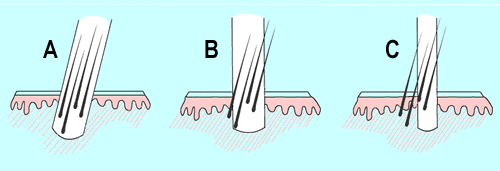
In order to decrease hair loss from punch-grafting, the surgical hair restoration technique of mini-micrografting was developed which used a strip method of graft harvesting. However, strip harvesting presented its own set of problems, with both the harvesting phase and subsequent graft generation causing significant damage to follicles and varying degrees of hair wastage. It wasn’t until the development of Follicular Unit Transplantation (FUT) in the mid 1990s, where stereo-microscopes were used to carefully dissect grafts from the donor strip, that these problems of hair wastage were eventually eliminated. Unfortunately, by this time thousands of patients have been treated with older hair transplantation techniques — many of which now require repair.
The following two patients had hair transplants using the punch-graft technique. In the first case, the patient had large grafts placed in the first two inches of his scalp. Unfortunately, there was so much hair destroyed in this technique that little was left to transplant into the remainder of the bald scalp. The second case shows the extensive damage to the back of the scalp caused by the open donor harvesting technique, where round plugs of hair were punched out from the back of the scalp with the wounds left open to heal after the hair transplant.
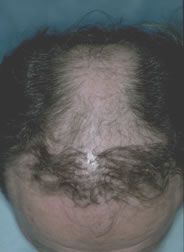
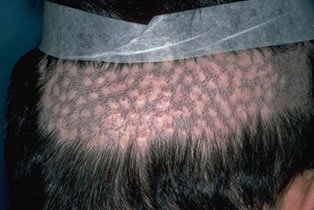
It is common for patients who have had open donor harvesting (the punch-graft technique) or for those who have had scalp reductions or lifts, to have a markedly depleted donor supply. In planning a hair transplant repair in a patient with limited donor reserves, it is generally best to focus on fixing the frontal hairline, as this usually offers the best cosmetic benefit and generally requires the least amount of hair. It is also important to make the frontal hairline as natural as possible, so that the patient has the option of combing his/her hair back, away from the hairline, to provide coverage to other parts of the scalp.
In “Side-weighting”, a gradient is created from the part side of the scalp (having the greatest transplanted density) to the opposite side (with the least). This pattern takes advantage of layering and adds a visual fullness to the hair transplant. A “Hockey Stick” is a more extreme example of side-weighting where, instead of creating a hair gradient, the surgeon devotes most of the hair to the hairline and part side of the scalp and covers the top of the scalp only lightly. The hair can then be combed diagonally backward from the hairline and part side and be held in position by the thinly transplanted (tacking) hairs. The “tacking hair” helps to keep the combed hair in place during routine activities and in the wind. This pattern conserves the most hair and is used in cases of a severely depleted donor supply. See figures below and read The Art of Repair in Surgical Hair Restoration: The Tactics of Repair.
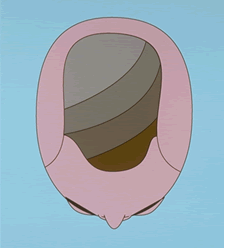
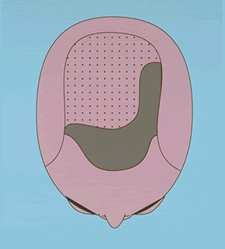
The following patient had a number of hair restoration procedures with the old punch-graft technique that resulted in a pluggy, unnatural hairline and significant balding in the mid-part of his scalp. The area was so smooth that it was difficult to even use a comb-over as the hair had nothing to hold on to. He had a thin, white scar that accentuated the abnormal look of the hairline. Finally, the patient’s donor supply was markedly depleted from the multiple procedures.
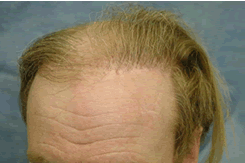
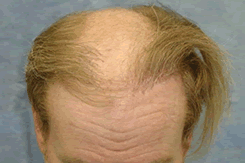
Because the patient’s donor density was low, we chose to devote the majority of the hair to correcting the hairline from the bad hair transplant procedures. The large grafts were removed and then redistributed as individual follicular units. Following the graft excisions, we used the small amount of additional hair obtained from the donor area to refine the frontal hairline and add very light coverage to the mid-portion of his scalp. This hair served to anchor the hair that was combed over from the part side.
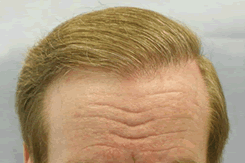
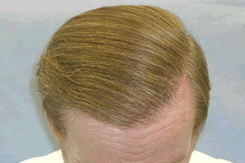
For more details on these patients and to see additional examples of corrective work performed at Bernstein Medical, please visit the Hair Transplant Repair section of our photo gallery.
For a comprehensive discussion of corrective hair transplantation procedures read Dr. Bernstein’s paired publications, The Art of Repair in Surgical Hair Restoration: Part 1: Repair Strategies and Part 2: The Tactics of Repair






